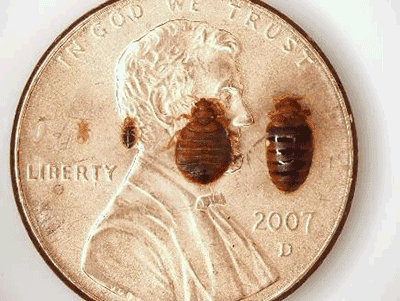Top A1 Bed Bug Treatment in Houston - Quick and Affordable
Top A1 Bed Bug Treatment in Houston - Quick and Affordable
Blog Article
Recognizing the Lifecycle of Pests for Targeted Control Strategies
Understanding the lifecycle of pests is a basic facet of effective pest monitoring techniques. Via a deeper understanding of how bugs thrive and evolve, tailored control approaches can be created to address certain factors in their lifecycle, ultimately leading to even more successful bug management results.
Relevance of Comprehending Bug Lifecycle
Understanding the lifecycle of bugs is important for creating reliable and targeted control strategies in bug monitoring. By comprehending the different phases a pest undergoes from egg to adult, bug control specialists can identify susceptible factors in the lifecycle where treatment can be most effective. For example, knowing when larvae are most energetic can aid determine the ideal timing for applying larvicides. Additionally, understanding the lifespan of a parasite types can help in anticipating populace development patterns and possible invasion threats.
Moreover, recognizing the specific environmental problems required for each and every stage of the bug's lifecycle can guide choices on environment modification or exclusion methods to reduce and interfere with the lifecycle pest populaces. This understanding allows pest monitoring experts to apply positive procedures as opposed to counting only on reactive treatments, causing even more sustainable and long-term insect control options. Inevitably, a detailed understanding of parasite lifecycles equips bug control professionals to tailor their strategies successfully, optimizing and reducing environmental effects control outcomes.
Secret Stages in Pest Development
To effectively execute targeted control strategies in insect administration, a crucial facet depends on thoroughly identifying and comprehending the vital stages in pest development. Pest advancement commonly contains a number of crucial phases that are vital for their lifecycle and management. The initial stage is the egg phase, where bugs lay eggs that later hatch right into larvae. Larvae after that advance right into pupae, a stage where they go through transformation prior to emerging as grown-up parasites. Recognizing these stages is crucial as it aids in identifying weak spots in the lifecycle where control procedures can be most reliable.

Susceptabilities in Insect Lifecycle
Throughout the various stages of a pest's lifecycle, distinct vulnerabilities arise that can be purposefully targeted for reliable control measures. One critical vulnerability exists in the egg phase, where insects are usually extra prone to specific pesticides or biological control representatives due to their soft outer covering, making them easier targets for intervention. In addition, the larval or nymph phase offers vulnerabilities as parasites undertake quick growth and growth, requiring high power usage that can be manipulated by interrupting their food sources or presenting growth preventions. Pupal stages, characterized by stability and transformation, supply a window for targeted control through physical barriers or specific therapies that hinder effective appearance. Adult parasites, while more resilient due to their reproductive capability, can still be vulnerable during breeding or egg-laying activities, which can be disrupted through scent traps or sanitation techniques. Understanding these susceptabilities in the pest lifecycle is crucial for establishing accurate and efficient control strategies that properly handle parasite populations while decreasing environmental impact.
Carrying Out Targeted Control Steps

Carrying out targeted control procedures usually entails a multi-faceted method. This may consist of environment alteration to make the atmosphere less welcoming to insects, such as eliminating standing water for mosquito control or securing entry factors for rats. A1 Bed bug Exterminator houston In addition, organic control methods can be made use of, where all-natural predators or virus are presented to keep insect populaces in check.
Integrated Pest Monitoring (IPM) strategies that integrate various control actions in a collaborated and lasting way are commonly the most reliable in accomplishing lasting insect administration goals. By executing targeted control steps based on a detailed understanding of bug lifecycles, pest populations can be successfully controlled while reducing dangers to human wellness and the atmosphere.
Boosted Parasite Monitoring Practices

Additionally, the unification of biological control agents, such as all-natural killers or microorganisms of pests, can help in reducing dependence on chemical pesticides and promote a more balanced ecological community. Applying physical barriers and traps can also become part of enhanced bug management techniques, supplying safe and targeted services for bug control. Furthermore, using scents and various other semiochemicals can interrupt pest mating patterns and interaction, resulting in reduced pest populations over time.
Conclusion
Finally, understanding the lifecycle of insects is important for reliable parasite monitoring techniques. By determining key stages in bug development and susceptabilities in their lifecycle, targeted control steps can be carried out to decrease bug populations. Enhanced bug monitoring techniques can help in reducing the reliance on broad-spectrum pesticides and advertise even more sustainable and eco-friendly pest control techniques. This understanding plays a crucial role in preserving healthy and balanced ecosystems and agricultural performance.
Comprehending the lifecycle of pests is important for creating reliable and targeted control methods in parasite administration. By understanding the various phases an insect goes through from egg to adult, pest control professionals can determine at risk factors in the lifecycle where treatment can be most successful. Inevitably, a thorough understanding of bug lifecycles empowers pest control specialists to customize their approaches effectively, reducing ecological impacts and taking full advantage of control end results.
By executing targeted control procedures based on a comprehensive understanding of pest lifecycles, insect populaces can be properly regulated while reducing risks to human wellness and the environment.
By recognizing crucial phases in pest development and vulnerabilities in their lifecycle, targeted control procedures can be executed to lessen bug populations.
Report this page